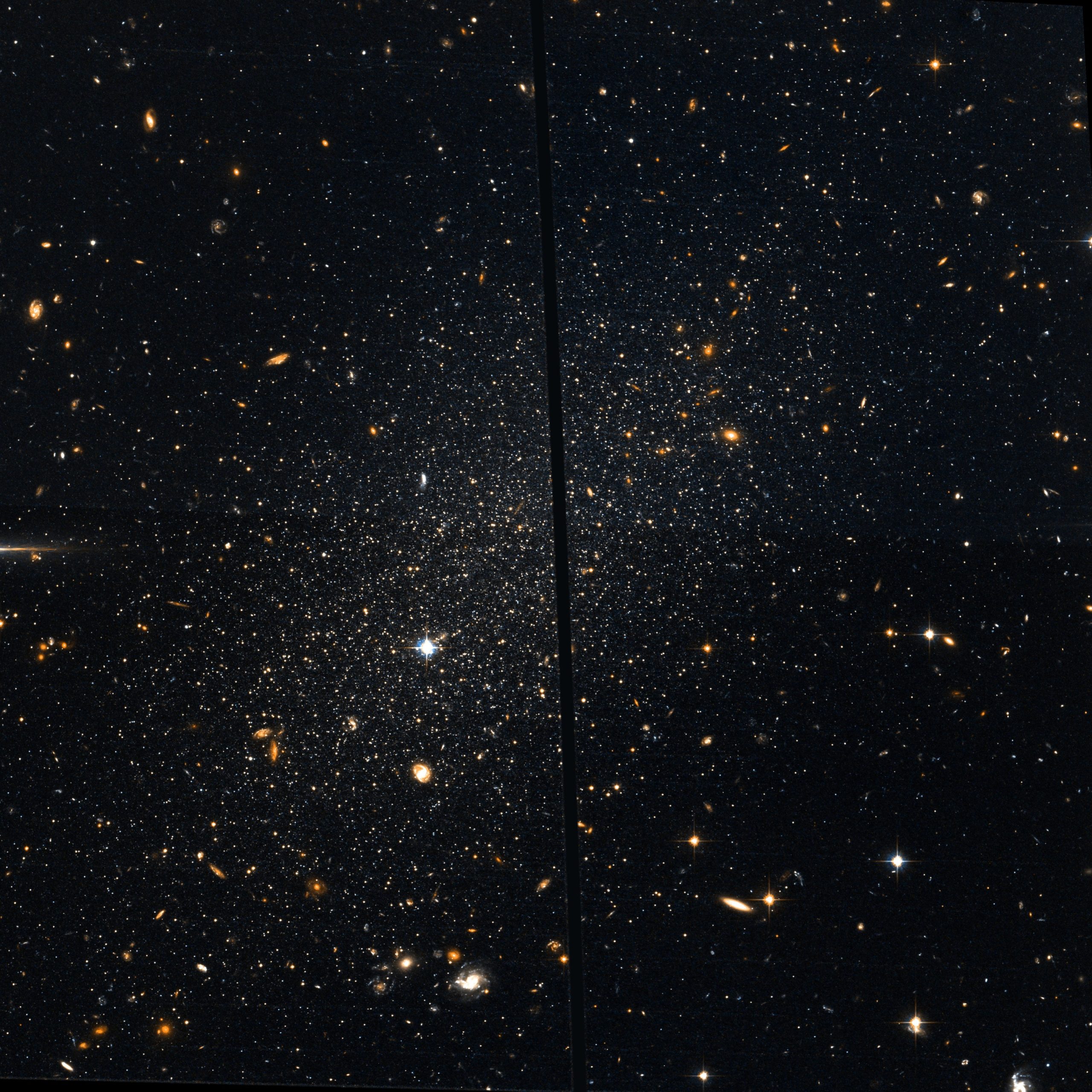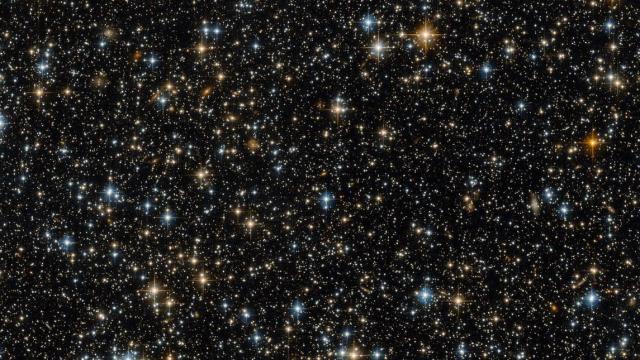Some 163,000 light-years from the Milky Way is a much smaller, much more ancient galaxy: Tucana II, so named for the tropical bird-resembling constellation in which it sits. Sitting at the periphery of our galaxy’s gravitational pull, Tucana II provides researchers with the opportunity to understand the composition of the earliest galactic structures in the universe.
Now, a team of astronomers has found evidence of an extended dark matter halo around the galaxy. Their research was published today in the journal Nature Astronomy.
“We know [dark matter] is there because in order for galaxies to remain bound, there must be more matter than what we see visibly, from starlight,” said Anirudh Chiti, an astronomer at the Massachusetts Institute of Technology, in a phone call. “That led to the hypothesis of dark matter existing as an ingredient that holds galaxies together; without it, galaxies that we know, or at least of the stuff at their outskirts, would just fly apart.”

A dark matter halo is a region of gravitationally bound matter in space. (The dark matter halo of the Milky Way extends far beyond the pinwheel that constitutes our galaxy’s visible stuff). The team found that the gravitational bounds of Tucana II are between three and five times more massive than previously thought, showing that even some of the oldest galaxies will have dark matter halos.
Tucana II happens to be the most chemically primitive galaxy that we currently know, meaning that some of its stars have very low metal content (the universe’s heavier elements were produced later in time). The team realised that Tucana II had the dark matter halo when observations of stars in that region of the sky revealed that the stars were moving in tandem.
“If you just look at the region of the sky where the galaxy exists, you don’t actually see a clustering or overdensity of stars,” Chiti, who is lead author of the recent paper, said. “It’s only when you look at their velocities and realise it’s a group of stars moving at the same velocity that you realise that there’s a galaxy that exists there.”
As study co-author Anna Frebel, also an astronomer at MIT, put it in a university press release, the whorl of Tucana II’s movement resembles “bathwater going down the drain.” Compellingly, some of the galaxy’s peripheral stars are older than stars closer to the galactic centre. The team hypothesizes that Tucana II may be the result of a previous galactic merger, a cosmic clash that saw one primitive galaxy consumed by another, resulting in stars of different origins in the same galaxy.
Whether or not that theory of Tucana II’s origin holds true, a similar collision is certainly in its future. Since it’s within the gravitational realm of the much-more-massive Milky Way, eventually, the relatively petite galaxy will be swallowed up by our own.
While astronomers know how to spot dark matter halos, they still don’t know exactly what dark matter is. Besides finding its halos around galaxies, researchers are also looking for dark matter’s identity in mysterious signals from neutron stars and in the form of tiny, theoretical black holes.
